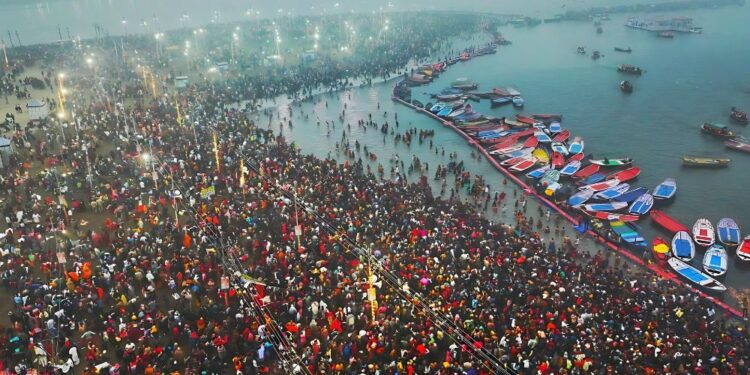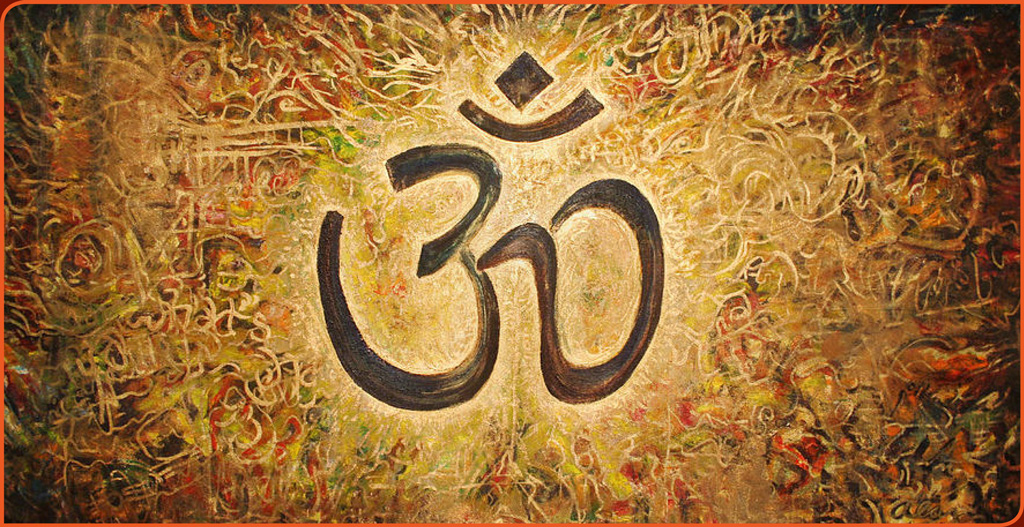The Kumbh Mela, named after the pitcher of Amrut (nectar) that emerged from the cosmic Samudra Manthan (churning of the ocean), stands as a profound symbol of the eternal struggle—individual, religious, and spiritual—to purify oneself, society, and the cosmos. This grand Dharmic festival transcends its physical manifestation, aligning millions of people, sacred river confluences (Sangam), and celestial configurations into a singular, timeless event.
In Hindu darshan (philosophy), every Katha (parable) carries a threefold teaching: Adi Bhoutik (physical), Adi Daivik (divine), and Adhyatmic (spiritual). The Kumbh Mela embodies this layered wisdom, drawing not only devotees from across Prithvi Lok (earthly realm) but also, as tradition holds, beings from Deva Lok (divine realm) and Brahma Lok (cosmic realm). Its antiquity is unparalleled—tracing back at least 8,000 years, it is among the oldest observances in Sanatan Dharma. With each iteration, surpassing the last in scale and splendor, the Kumbh illuminates humanity with the radiant glow of eternal Hindu Dharma, signaling its endurance.
Acknowledged by UNESCO as an intangible cultural heritage, the Kumbh Mela is the world’s largest peaceful holy gathering. The 2025 Maha Kumbh welcomed an estimated 66.21 crore (662.1 million) visitors. This spectacle extraordinaire unites people beyond jaati(caste), panth(creed), or geography, as millions take a sacred dip at the Triveni Sangam—the confluence of the Ganga, Yamuna, and the disappeared Saraswati—seeking moksha (liberation). It dissolves perceived social divides—caste, varna, or the oft-accusation of untouchability—so frequently weaponized by critics to malign Hindu society. At the Triveni Sangam, all bathe as equals, their distinctions washed away by the sanctifying waters. The 2025 Maha Kumbh drew pilgrims not just from India’s farthest corners but also from around the globe, underscoring its universal appeal.
Beyond its spiritual core, the Kumbh Mela has long been a crucible of historical and cultural significance. During India’s freedom struggle, leaders like Bal Gangadhar Tilak leveraged its vast gatherings to galvanize nationalist sentiment. Post-1857, British colonial authorities kept a watchful eye on the event, wary of its potential to ignite mass movements. In modernity, it projects Hindu Dharma’s global soft power. On February 1, 2025, 118 diplomats from 77 nations attended, affirming its stature as a beacon of spiritual and cultural influence.
Rooted in the Samudra Manthan —where gods and demons collaborated to churn the ocean for divine nectar—the Kumbh Mela weaves a shared heritage that binds ascetics and grihastha(householders) alike in a narrative of cosmic struggle and triumph. The Maha Kumbh of 2025 stood as a monument to unity—spiritual, social, and cultural. This ancient festival reaffirms our shared humanity, the unbroken thread of Dharma, and the timeless pursuit of truth and transcendence. As millions stood shoulder to shoulder in the sacred waters, the Kumbh Mela whispered a resounding truth across time and space: we are all seekers, united by faith, devotion, and the eternal quest for The Divine.




![[ India Today ] Ohio senator JD Vance thanks wife, a Hindu, for helping him find Christian faith](https://hinduvishwa.org/wp-content/uploads/2024/06/us-senator-jd-vance-reveals-how-his-hindu-wife-usha-helped-him-find-his-christian-faith-image-re-272530504-16x9_0-120x86.webp)









